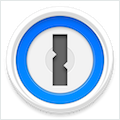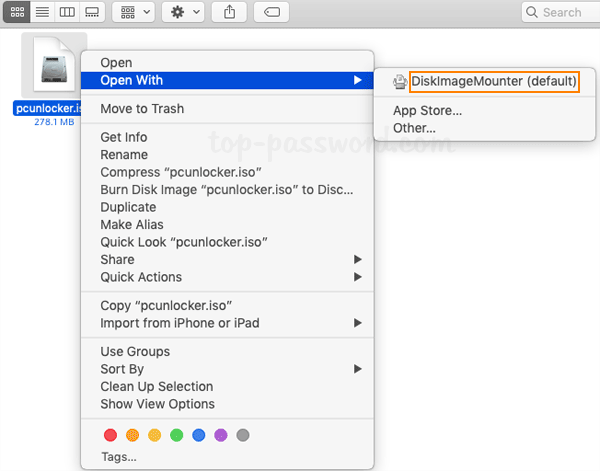
If you see a dialog, click the pop-up menu, then choose Open Finder. Select “Make this action the default” if you want to open the Finder every time you insert a blank disc. The disc appears on your desktop. Double-click the disc to open its window, then drag the files and folders you want to burn to the window. Aug 26, 2019 The principal variant of Mac OS X was Mac OS X High Sierra 10.13. Macintosh OS X Server 1.0 – 1.2v3 depended on Rhapsody, a half and half of OPENSTEP from NeXT Computer and Mac OS 8.5.1. The GUI resembled a blend of Mac OS 8's Platinum. Dec 17, 2019 Express burn, presented by NCH software officially, is one of the best burning software for Mac and Windows. It supports a wide range of audios, videos, images and data to burn, and gives you the right to handle ISO/Joliet, Hybrid and UDF. As a best CD burner for Mac, it is absolutely competent.
These advanced steps are primarily for system administrators and others who are familiar with the command line. You don't need a bootable installer to upgrade macOS or reinstall macOS, but it can be useful when you want to install on multiple computers without downloading the installer each time.
Download macOS
Find the appropriate download link in the upgrade instructions for each macOS version:
macOS Catalina, macOS Mojave, ormacOS High Sierra
Installers for each of these macOS versions download directly to your Applications folder as an app named Install macOS Catalina, Install macOS Mojave, or Install macOS High Sierra. If the installer opens after downloading, quit it without continuing installation. Important: To get the correct installer, download from a Mac that is using macOS Sierra 10.12.5 or later, or El Capitan 10.11.6. Enterprise administrators, please download from Apple, not a locally hosted software-update server.
OS X El Capitan
El Capitan downloads as a disk image. On a Mac that is compatible with El Capitan, open the disk image and run the installer within, named InstallMacOSX.pkg. It installs an app named Install OS X El Capitan into your Applications folder. You will create the bootable installer from this app, not from the disk image or .pkg installer.
Use the 'createinstallmedia' command in Terminal
- Connect the USB flash drive or other volume that you're using for the bootable installer. Make sure that it has at least 12GB of available storage and is formatted as Mac OS Extended.
- Open Terminal, which is in the Utilities folder of your Applications folder.
- Type or paste one of the following commands in Terminal. These assume that the installer is still in your Applications folder, and MyVolume is the name of the USB flash drive or other volume you're using. If it has a different name, replace
MyVolumein these commands with the name of your volume.
Catalina:*
Mojave:*
High Sierra:*
El Capitan: - Press Return after typing the command.
- When prompted, type your administrator password and press Return again. Terminal doesn't show any characters as you type your password.
- When prompted, type
Yto confirm that you want to erase the volume, then press Return. Terminal shows the progress as the bootable installer is created. - When Terminal says that it's done, the volume will have the same name as the installer you downloaded, such as Install macOS Catalina. You can now quit Terminal and eject the volume.
* If your Mac is using macOS Sierra or earlier, include the --applicationpath argument, similar to the way this argument is used in the command for El Capitan.
Use the bootable installer
After creating the bootable installer, follow these steps to use it:
- Plug the bootable installer into a compatible Mac.
- Use Startup Manager or Startup Disk preferences to select the bootable installer as the startup disk, then start up from it. Your Mac will start up to macOS Recovery.
Learn about selecting a startup disk, including what to do if your Mac doesn't start up from it. - Choose your language, if prompted.
- A bootable installer doesn't download macOS from the Internet, but it does require the Internet to get information specific to your Mac model, such as firmware updates. If you need to connect to a Wi-Fi network, use the Wi-Fi menu in the menu bar.
- Select Install macOS (or Install OS X) from the Utilities window, then click Continue and follow the onscreen instructions.
Learn more
For more information about the createinstallmedia command and the arguments that you can use with it, make sure that the macOS installer is in your Applications folder, then enter this path in Terminal:
Catalina:
Mojave:
High Sierra:
El Capitan:
The principal variant of Mac OS X was Mac OS X High Sierra 10.13. Macintosh OS X Server 1.0 – 1.2v3 depended on Rhapsody, a half and half of OPENSTEP from NeXT Computer and Mac OS 8.5.1. The GUI resembled a blend of Mac OS 8’s Platinum appearance with OPENSTEP’s NeXT-based interface. It incorporated a runtime layer called Blue Box for running inheritance Mac OS-based applications inside a different window. There was the talk of executing a ‘straightforward blue box’ which would intermix Mac OS applications with those composed for Rhapsody’s Yellow Box condition, yet this would not occur until Mac OS X’s Classic condition. Apple File Services, Macintosh Manager, QuickTime Streaming Server, WebObjects, and NetBoot were incorporated with Mac OS X Server 1.0 – 1.2v3. It couldn’t utilize FireWire gadgets.
Tutorials: How to Clean Install Mac OS using a USB drive on Mac

License
Official Installer
File Size
5.0GB / 4.85GB
Language
English
Developer
Apple Inc.
Download: Mac OS Sierra 10.12 ISO and DMG Image
macOS High Sierra (variant 10.13) is the fourteenth significant arrival of macOS, Apple Inc’s. work area working framework for Macintosh PCs. It is the successor to macOS Sierra and it was declared at the WWDC 2017 on June 5, 2017, preceding being discharged on September 25, 2017; its successor macOS Mojave was discharged on September 24, 2018.
The name “High Sierra” alludes to the High Sierra area in California. Likewise, with Snow Leopard, Mountain Lion, and El Capitan, the name additionally implies its status as a refinement of its antecedent, concentrated on execution enhancements and specialized updates instead of client highlights. Among the applications with remarkable changes are Photos and Safari.
System Requirements
All Macintosh PCs that can run Mountain Lion, Mavericks, or Yosemite can run El Capitan, despite the fact that not the majority of its highlights will chip away at more seasoned computers. For instance, Apple takes note of that the recently accessible Metal API is accessible on “all Macs since 2012”.
These PCs can run El Capitan if they have in any event 2GB of RAM
- MacBook: Late 2008 or fresher
- MacBook Air: Late 2008 or fresher
- MacBook Pro: Mid 2007 or fresher
- Macintosh Mini: Early 2009 or fresher
- iMac: Mid 2007 or fresher
- Macintosh Pro: Early 2008 or fresher
- Xserve: Early 2009
Of these PCs, the accompanying models were furnished with 1GB RAM as the standard choice on the base model when they were delivered initially. They can possibly run OS X El Capitan if it is the that they have only 2GB of RAM.
- iMac: Mid 2007
- iMac: Early 2008
- Macintosh Mini: Early 2009
The accompanying PCs bolster highlights, for example, Handoff, Instant Hotspot, AirDrop between Mac PCs and iOS gadgets, just as the new Metal API
- iMac: Late 2012 or more up to date
- MacBook: Early 2015 or more up to date
- MacBook Air: Mid 2012 or more up to date
- MacBook Pro: Mid 2012 or more up to date
- Macintosh Mini: Late 2012 or more up to date
- Macintosh Pro: Late 2013
The update differs in size contingent on which Apple Mac PC it is being introduced on, in many situations, it will require around 6 GB of plate space.
Download Mac OS High Sierra 10.13 ISO/DMG
macOS Mojave is the most recent rendition of Mac with new highlights. Nonetheless, this refresh will keep running on Mac 2012 or later forms. On the off chance that you are running macOS 10.13.2 or prior, you ought to probably move up to the most recent rendition of MacOS 10.14 from the App Store.
The main reason that users prefer downloading from the App Store is that it will just download the stub installer (web installer) which is little in size. The real Operating System will begin introducing after running the stub installer.
In this article, you will most likely download macOS High Sierra 10.13 full installer. You can make a bootable USB from the given record and complete a new introduce just as update the present establishment of your Mac OS.
About Apple Security Updates
For their clients’ insurance, Apple doesn’t uncover, examine, or affirm security issues until an examination has happened and fixes or discharges are accessible. Ongoing discharges are recorded on the Apple security refreshes page.
For more data about security, see the Apple Product Security page. You can encode interchanges with Apple utilizing the Apple Product Security PGP Key.
Apple security archives reference vulnerabilities by CVE-ID when conceivable.
If the download of your software fails
If the download of your software fails, the only thing you can do is to pause and retry later. Or on the other hand, change from a remote to a satellite web association. On the off chance that this doesn’t help, go to App Store > View My Account and restart the download from the Unfinished Downloads segment.
Burn App On Mac High Sierra Download
More often than not, garbage documents and applications take up a few gigabytes of Mac space. The most exceedingly bad is that they’re altogether scattered in various Mac frameworks. Be that as it may, you can find them all once you download a mac cleaning utility like MacKeeper. Simply download the application and select the Safe Cleanup method. It’ll demonstrate to you how much garbage is on your Mac. Next, continue to the Duplicates Finder and remove pointless duplicates. At last, use Smart Uninstaller to dispose of pointless applications, modules, program expansions, and voilà — you have got your MacOs High Sierra downloaded on your system.
You can alternatively download Mac OS High Sierra 10.13 ISO/DMG from our website instead of the Mac App Store.
Mac OS High Sierra 10.13 ISO / DMG file Direct Download
The principal variant of Mac OS X was Mac OS X High Sierra 10.13. Macintosh OS X Server 1.0 – 1.2v3 depended on Rhapsody, a half and half of OPENSTEP from NeXT Computer and Mac OS 8.5.1. The GUI resembled a blend of Mac OS 8's Platinum appearance with OPENSTEP's NeXT-based interface. It incorporated a runtime layer called Blue Box for running inheritance Mac OS-based applications inside a different window. There was the talk of executing a 'straightforward blue box' which would intermix Mac OS applications with those composed for Rhapsody's Yellow Box condition, yet this would not occur until Mac OS X's Classic condition. Apple File Services, Macintosh Manager, QuickTime Streaming Server, WebObjects, and NetBoot were incorporated with Mac OS X Server 1.0 – 1.2v3. It couldn't utilize FireWire gadgets.
Price Currency: USD
High Sierra Mac App Store
Operating System: Mac OS High Sierra 10.13
Mac Os Sierra Installer App
Application Category: OS
Burn App On Mac High Sierra Ca
4.9